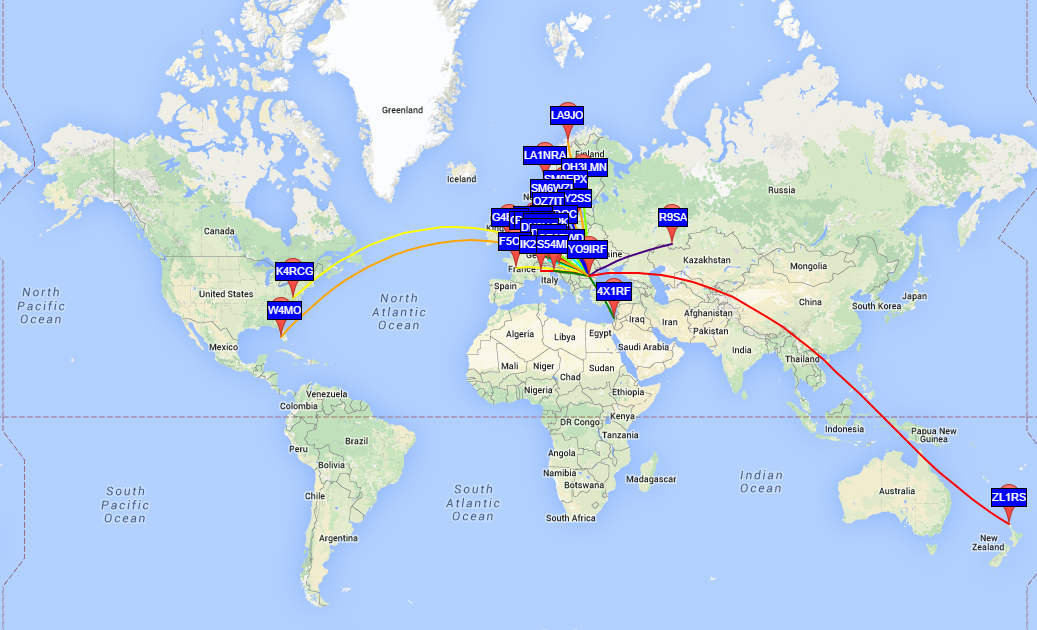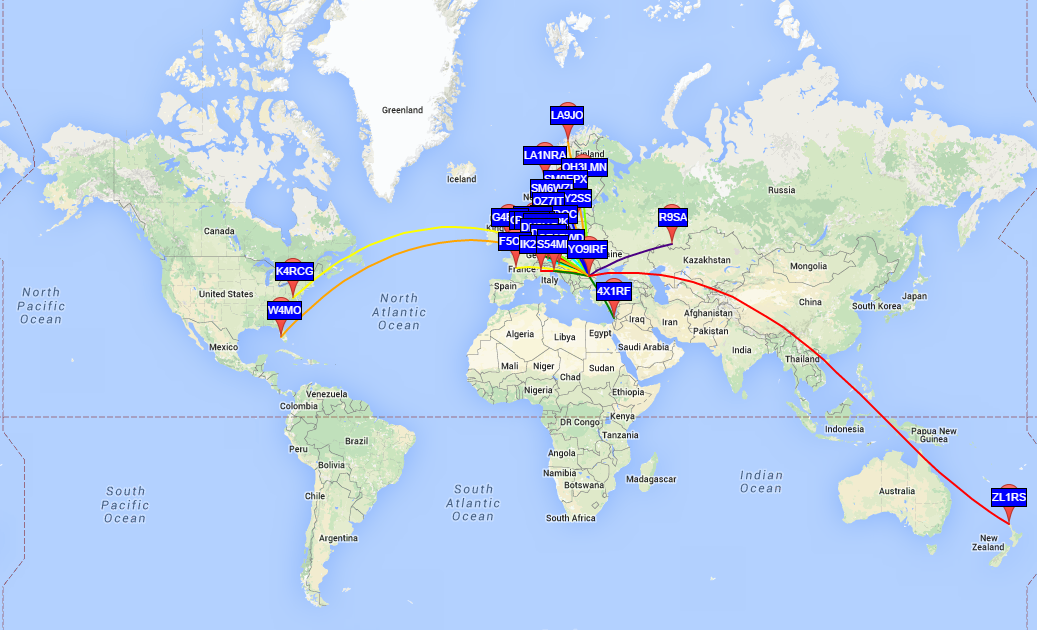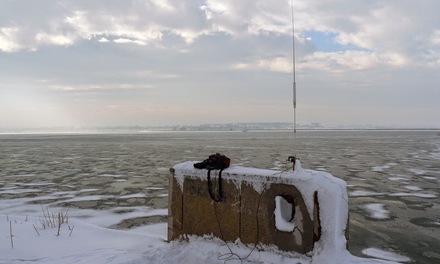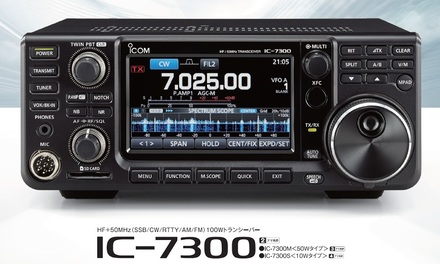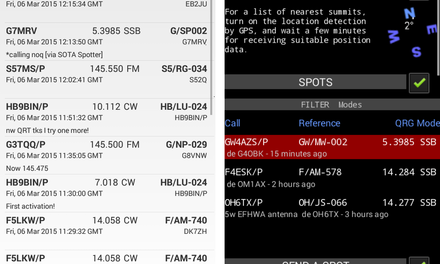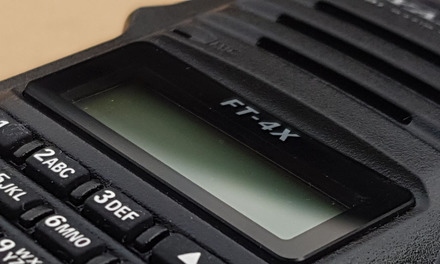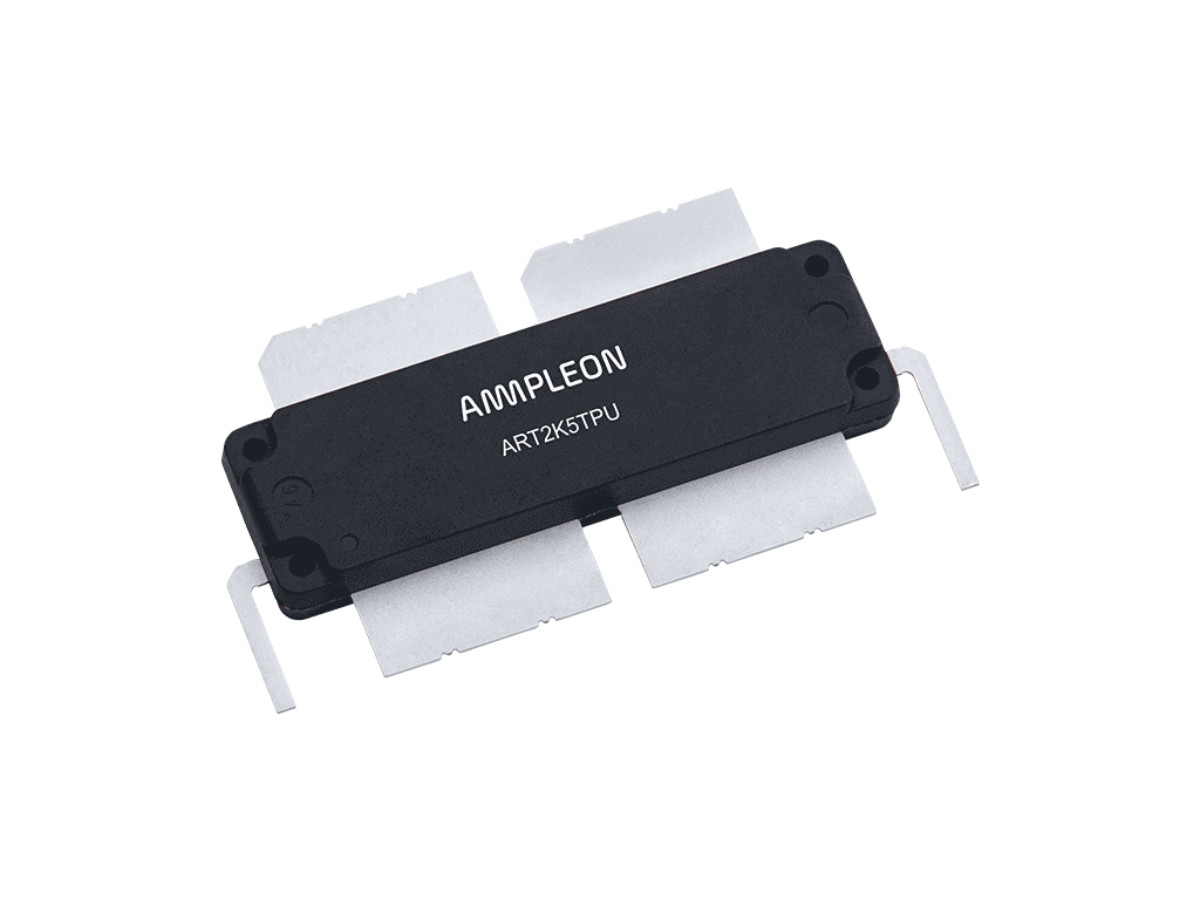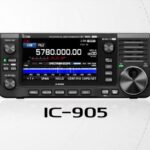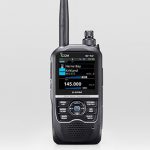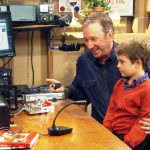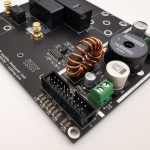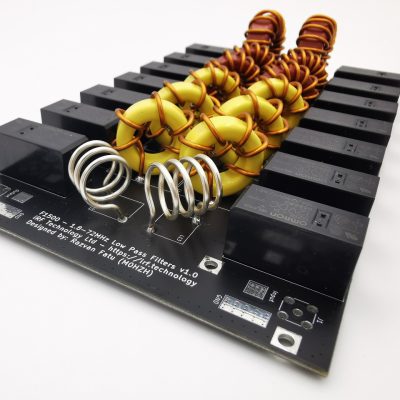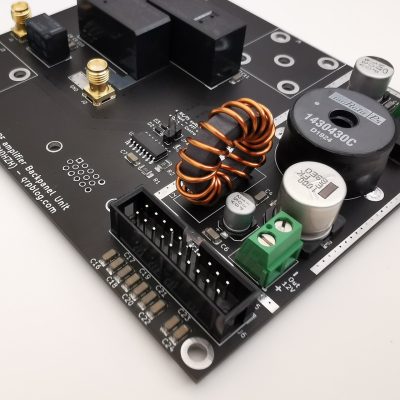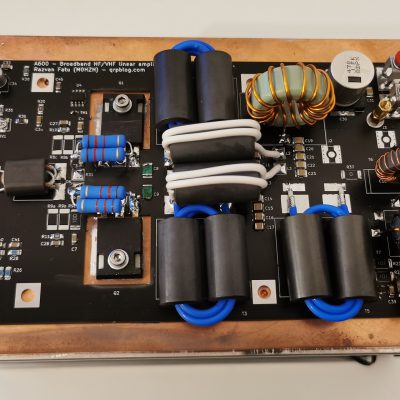Some time ago Aurel YO3IBZ borrowed me his Ultimate3 to try and replace the AD9850 DDS with AD9851 so we could make it into a useful 6m WSPR beacon. Unfortunately I only managed to make it work at low frequencies (below 10Mhz or so), and even though Hans (who created the Ultimate3) was very supportive with firmware and such, I came to the conclusion the easiest way was to just force the AD9850 to work at 50Mhz.
This is not really an issue, it’s just that above ~25MHz the AD9850 output level starts decreasing and spurs start to appear. Output level is not really an issue because there is some amplification after the DDS, and the spurs above 50MHz should be largely stopped by the DDS onboard low-pass elliptic filter (cutoff around 72MHz) plus the other low-pass filter I’ve attached to the output (cutoff around 55MHz).
So I just strapped the new filters I made (not only for 6m, but also for 10m and 15m) into the sockets of the Ultimate3 and found a nice metal casing for it:
It needed some adjusting in order to make the internal clock and frequency generation spot-on: the 20MHz AVR clock is actually 19.997.285 and the AD9850 125MHz reference is 125.000.350. It might not seem like much but WSPR relies on perfect timing and frequency accuracy, and the 350 Hz error on the AD9850 makes the generated frequency fall out of band on 10m and 6m. Unfortunately these oscillators are thermally-sensitive, and we need to figure out a way to stabilise if we want to use this in a remote installation as we planned.
I’ve been testing the beacon for a few days now and finally yesterday evening I got it working properly, timings, clocks etc. The crown of my little acheievement was a spot from ZL1RS on 20m, a station from New Zealand 17000km away. I also got a few reports from USA’s East Coast, somewhere above the Arctic Circle, Middle East and alot of spots from Europe, so I’d say 200mW is doing a fine job for a WSPR beacon.
At the moment the beacon is running in testing mode from my shack in Bucharest, with a 42m long OCFD antenna, on the following bands: 6m, 10m, 15m, 20m, 30m, 40m. Transmission cycles start at HH:00, HH:20, HH:40 (2 minutes for each band plus 8 minutes for cooldown), so there are 3 transmissions per band every hour. This might not be enough for 6m in summer when conditions change rapidly, so I will probably add more 6m transmissions to every cycle. Other bands can be added, 12m and 17m with no hardware modifications since they can share the 10m/15m low-pass filters, and 80m or below by replacing bands that are already in use; but, 80m and below makes no sense for such low-power and modest antennas.

